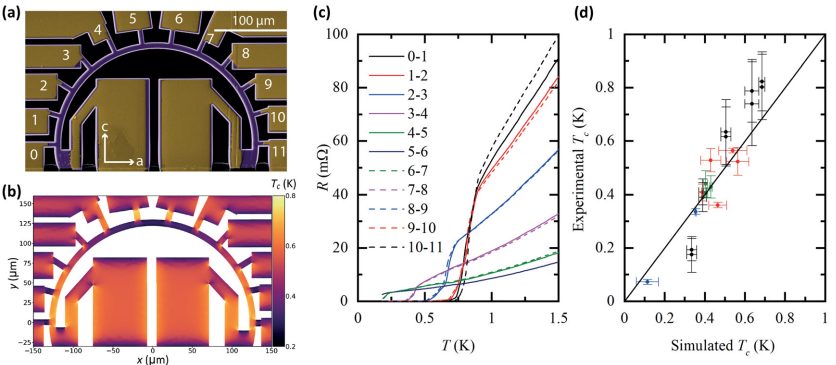
Controlling superconductivity of CeIrIn5 microstructures by substrate selection
ResearchScience
Superconductor/metal interfaces are usually fabricated in heterostructures that join these dissimilar materials. A conceptually different approach has recently exploited the strain sensitivity of heavy-fermion superconductors, selectively transforming regions of the crystal into the metallic state by strain gradients. The strain is generated by differential thermal contraction between the sample and the substrate. Here, we present an improved finite-element model that reliably predicts the superconducting transition temperature in CeIrIn5 even in complex structures. Different substrates are employed to tailor the strain field into the desired shapes. Using this approach, both highly complex and strained as well as strain-free microstructures are fabricated to validate the model. This enables a high degree of control over the microscopic strain fields and forms the basis for more advanced structuring of superconductors as in Josephson junctions yet also finds natural use cases in any material class in which a modulation of the physical properties on a chip is desirable.
Full text
View at publisher
QMAT Publications
Appl. Phys. Lett.120 092601 (2022)
2 March 2022
DOI: 10.1063/5.0082561